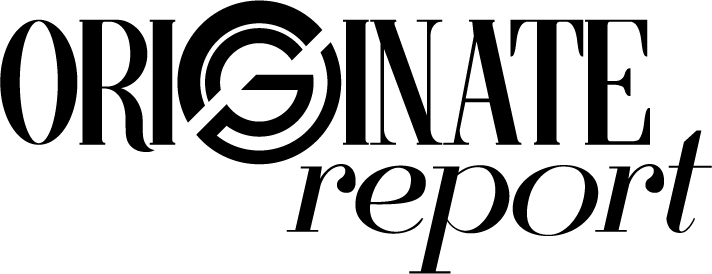A bridge loan is a short-term loan that is used to help someone buy a new home before they sell another property. Simply put, this product assists homeowners who may feel stuck in their home or without additional loan options. No one understands this bind better perhaps than Sofia Nadjibi and Mark Hanf, who have teamed up on an upcoming book ‘The Power of Bridge Loans’ about the subject of bridge loans. Nadjibi, Principal & Broker of Golden Gate Lending Group, and Hanf, Founder & CEO of Pacific Private Money, pooled their combined decades of experience in lending to illustrate the power and breadth of bridge lending.
Originate Report sat down with the duo to discuss their upcoming book and the timeliness of informing real estate professionals about the power of bridge loans.
Originate Report (OR): How did both of you enter the space? Were real estate and bridge lending topics that were always on your radar?
Sofia Nadjibi (SN): I have been in the mortgage business for almost 25 years now and was working as a traditional mortgage lender; I was also the in-house mortgage lender for several real estate companies – back when I became extremely passionate about creating strategies for getting people into the properties they desire, I sensed that in a post-2008 crash environment I could scale bridge loan products in the marketplace, and also realized that many were not aware this class of loan tools even existed.
Additionally, when my family wanted to move in 2010, we found our perfect home utilizing the bridge loan tool to make the transition work. Once I saw how there was no sale contingency, and we ultimately received a discount on the house, I understood how powerful bridge loans could be for consumers. My own experience with the product aside, I have always held such passion for working closely with all real estate professionals.
Mark Hanf (MH): I launched Pacific Private Money in 2008 after a 20-year career in real estate development, and now we’ve grown the company to more than 30 team members. We’re serving both consumer and real estate investors, and the journey from developer to lender, I have found, has been very serendipitous. Obviously, coming out of the financial crisis of 2008 was a difficult period to navigate, but I think the team that was put into place – in addition to learning about and implementing tools such as bridge loans – has crafted the success that Pacific Private Money continues to see.
OR: What are some of the areas or topics that the book delves into specifically?
SN: We will always look out for the client’s best interest, and that is one of the main points or takeaways that we wanted to highlight in the book. We are also sharing many real-life stories of clients that we have helped over the years. We will always explore every loan option to ensure that a bridge loan is the right path, and likewise, we wish to share that knowledge with every real estate professional who picks up the book. But in terms of specific examples, one client we have seen repeatedly is older generations who are looking to downsize. One client we had, who was 92, had lived in her home for over 50 years – she was the most remarkable woman ever, and we made sure that every step we were taking was in her best interest. I cannot reiterate enough that this book aims to educate and reinforce the importance of a measured approach to starting the process of a bridge loan.
MH: One of the most important things, I think, that we do in the book is set the current stage and explain all of the extenuating circumstances that have led to where we currently find ourselves. We’re in a market today the likes of which none of us have ever seen, so I think many real estate professionals are having a difficult time understanding or finding which products work best for them. What we’re aiming to do is address our piece of the puzzle and extol the virtues of a class of products many people don’t know about, bridge loans.
OR: Why is now the best time to disseminate information about the subject of bridge loans?
SN: The biggest reason, in my eyes, is because of how hyper-competitive the market is right now. Throughout the COVID-19 pandemic, we have seen constant movement in the real estate market. Many Millennials are entering the market for the first time. And people who have traditionally lived in cities or more urban areas realized that more space is necessary. If I were to look to boil it down into one word, that word would be change. This prolonged period of being at home has made people value their homes more and to think about not only what makes them feel at home, but ultimately what sort of home they want.
There are so many more buyers out there now, versus how many homes are for sale. Inventory is at an all-time low, and in order to secure the property of your choice, you must be competitive, no matter what market you find yourself in; and with that competitiveness comes the best offer, the best terms, no contingencies, and making sellers feel as though your offer is the best they will find.
MH: The past year has seen uncertainty in the market, and frankly, COVID-19 created a perfect storm of events. You already had ten years’ worth of low numbers in terms of new housing stock, both nationally and here in California – and paired with this, there are older generations who are looking to downsize and younger generations looking to move into their first homes. As Sofia mentioned, the pandemic also shifted how many people view their homes and what home itself means. What I strive to do every day is help people get to the heart of that question.
OR: Ultimately, who is the audience for this book? Is this set of tools primarily geared towards real estate professionals or homeowners who may feel bogged down by the system?
SN: I think Mark hit at the center of this issue, providing a solution for homeowners and real estate professionals. We provide a solution for people who, under normal circumstances and without the knowledge of bridge loans, may delay or dismiss the potential of moving into a new property. It’s about providing education, but also merely increasing awareness for this solution. In terms of the book itself, it’s also about marrying my expertise with Mark’s expertise. Although we’ve both been professionals in this space for over two decades, every real estate professional will approach situations through a slightly different lens.
MH: At the end of the day, we’re helping homeowners with a solution, and we’re providing the tools to get to that solution. Regardless of whether a particular party is aware of bridge loans, they know that there is a desire to move into a new property, and in many cases, they may feel trapped without access to the toolset of bridge loans. So in terms of thinking about who this product is for, I find it is best to think about anyone who wishes to spring that trap. Aside from home buyers and homeowners, it goes without saying that this book is geared towards real estate professionals as well. Bridge loans are tools that anyone can use to be a hero for their clients, and we are perpetually looking to ally ourselves with this empowered group of real estate professionals.
OR: How did you approach the writing process? Did you have a sense of trepidation about approaching such an ambitious project?
SN: What was important for both Mark and me was finding someone who could have our voice and understand what we were doing. We take great pride in our work, so finding a writer and working to create the flow of the book ties back into the education component that is so important. We want to educate our readers on the amazing tools that are out there, tools that many people don’t know about. Both Mark and I were challenged to put our expertise into words and relive situations and anecdotes that speak to the amazing tools we offer through the interview process. At the end of the day, if you are crystal clear in your approach and have a firm understanding of the players involved, the commissions will come naturally – but it’s not about the commission, that’s not why I do it. I am passionate about helping homeowners make the next move. Creating this book has been a great ride.
MH: The book writing industry has come a long way in the last few years, or in the previous five years specifically, and we have used that to our advantage throughout the course of writing this book. For this project, we utilized the services of an editor who interviewed us throughout many two-hour sessions, and the significant part about that format, or using the services of a writer and editor specifically, is that Sofia and I can sit back and take stock of our experiences to serve the structure of the book better. We were both very cognizant throughout the process to ensure that the book is not about us. It is about the set of tools out there for both prospective and seasoned homebuyers.



